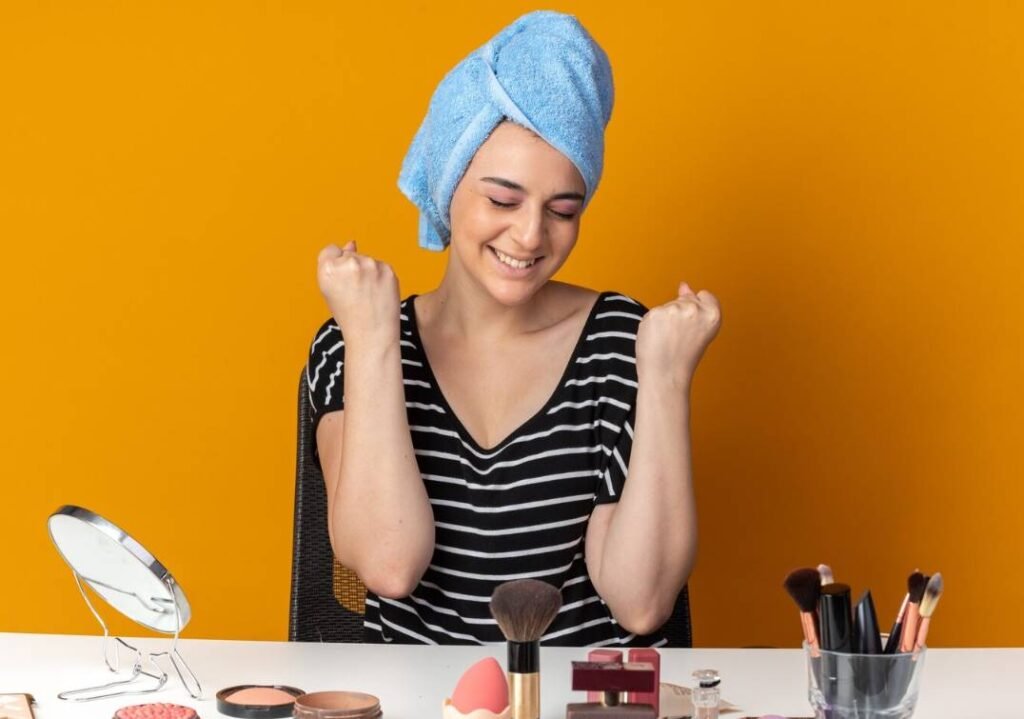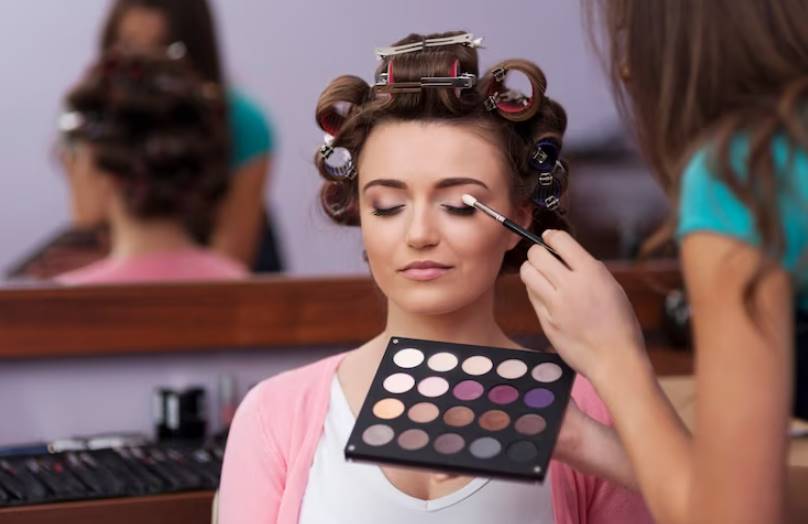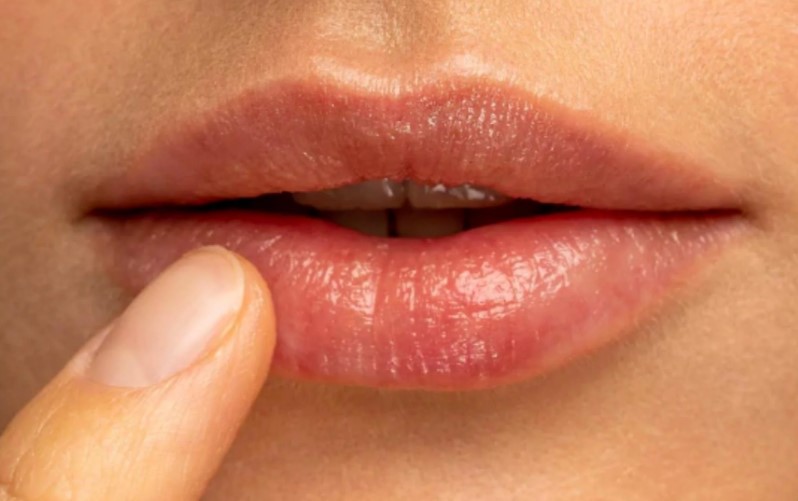Skincare has become an essential aspect of our daily routine, especially for those who love to maintain their youthful glow and healthy skin. Our skin is one of the most visible parts of our body, and it reflects our overall health and well-being. Thus, taking care of our skin is not just a matter of looks but also of health. A good skincare regimen can do more than just cleanse, tone, and moisturize.
It can protect your skin from aging, damage, and pollutants, and prevent various skin problems such as acne, wrinkles, and dark spots. However, the key to achieving an effective skincare routine is to use the right products that suit your skin type. In this article, we will discuss some tips and tools that can help elevate your beauty routine and make it more effective for your skin’s needs. So, let’s dive in and explore some helpful insights that can transform your routine into a more rewarding experience!
Identify Your Skin Type
Identifying your skin type is crucial in establishing an effective skincare routine. There are five main skin types, each with its unique characteristics and needs. These skin types include normal, dry, oily, combination, and sensitive skin.

Normal skin is considered the most balanced skin type, with few imperfections and a well-maintained moisture barrier. Dry skin is characterized by itchiness, flakiness, and a lack of moisture. Oily skin tends to produce excess oil, which can lead to blemishes, acne, and large pores. Combination skin is a mix of dry and oily areas, typically with an oily T-zone and dry cheeks. Finally, sensitive skin can be easily irritated by environmental factors, ingredients in products, and even touch.
To identify your skin type, start by washing your face with a gentle cleanser and patting it dry with a clean towel. Observe your skin for different signs and characteristics over the next few minutes, such as:
– If your skin feels tight or itchy, you likely have dry skin.
– If your skin appears shiny and you can see obvious pores, you likely have oily skin.
– If your skin is a mix of oily areas and dry patches, you likely have combination skin.
– If your skin appears red or easily irritated, you likely have sensitive skin.
Once you’ve identified your skin type, be sure to use products specifically tailored to your skin’s needs. Using the wrong products can lead to further imbalances, breakouts, or sensitivity. For example, using a harsh drying product on already dry skin can lead to greater flakiness and discomfort. Using a heavily fragranced product on sensitive skin can trigger an allergic reaction.
In contrast, using products tailored to your specific skin type can help restore balance, provide necessary moisture, and address issues such as acne or sensitivity. For example, those with oily skin might benefit from a gentle, oil-free cleanser and toner to help reduce oil production and unclog pores. Those with dry skin might benefit from a richer moisturizer and gentle exfoliating products to help remove flakiness and maintain hydration.
Cleansing
Cleansing is an essential part of any skincare regimen. It helps remove dirt, oil, pollution, and makeup residue from the skin’s surface, preventing clogged pores, breakouts, and other skin problems. Cleansing also prepares the skin for other products, such as serums and moisturizers, allowing them to penetrate effectively and deliver their benefits to the skin.
Using the right cleanser is crucial for achieving the best results from your skincare regimen. Each skin type requires a specific cleanser that will effectively cleanse the skin without stripping it of its natural oils, which can cause dryness and irritation. For example, those with oily skin should use a foaming or gel cleanser that helps remove excess oil and impurities, while those with dry skin should opt for a creamy or milky cleanser that adds moisture to the skin.

There are different types of cleansers available on the market, and each has its own benefits:
Foaming cleansers: These cleansers are great for oily or acne-prone skin as they remove excess oil and impurities effectively.
Gel cleansers: These cleansers are mild and won’t strip the skin of its natural oils. They are a good choice for those with combination skin.
Creamy cleansers: These cleansers are rich in texture and add moisture to the skin. They are ideal for dry or mature skin.
Micellar waters: These cleansers are gentle and effective at removing makeup and impurities from the skin. They are a good choice for those with sensitive skin.
It’s recommended to cleanse twice a day, in the morning and at night, to keep the skin clean and healthy. If you wear makeup or sunscreen, it’s important to double cleanse at night to ensure that all the residue is removed from the skin. Double cleansing involves using an oil-based cleanser first to break down makeup and impurities, followed by a water-based cleanser to deeply cleanse the skin.
Exfoliation
Exfoliation is a vital step in any skincare routine as it helps to remove dead skin cells from the surface of the skin. The process of exfoliation allows for deeper penetration of your skincare products, helps to unclog pores, and stimulates new cell growth. By exfoliating, you can achieve a smoother, brighter, and more radiant complexion.
Regular exfoliation has many benefits for different skin types. For oily skin, it can help to minimize the appearance of pores and prevent breakouts. For dry skin, it can help to remove dry and flaky skin, allowing your moisturizer to absorb better. For mature skin, it can promote collagen production and reduce the appearance of fine lines and wrinkles. Overall, exfoliating can help to improve the texture and tone of your skin.
There are different types of exfoliants available, and each has its unique benefits. Physical exfoliants, such as scrubs or facial brushes, physically remove dead skin cells from the surface of the skin. Chemical exfoliants, such as alpha-hydroxy acids (AHAs), beta-hydroxy acids (BHAs), or enzymes, work by dissolving the bonds between dead skin cells, allowing them to be lifted away more easily. Both physical and chemical exfoliants are effective, and the best option will depend on your skin type and personal preference.
How often to exfoliate and when to avoid it depends on your skin type and the type of exfoliant you are using. For most skin types, exfoliating once or twice a week is enough. However, if you have sensitive skin, once a week or even less frequently may be best. It is also essential to avoid exfoliating if you have active breakouts or any irritation or inflammation on the skin.
In summary, exfoliation is a crucial step in any skincare routine. By regularly exfoliating, you can achieve a smoother, brighter, and more radiant complexion. There are different types of exfoliants available, and the best option will depend on your skin type and personal preference. It is important to follow the recommended frequency and avoid exfoliating if you have active breakouts or any irritation on the skin.
Moisturizing
Moisturizing is an essential step in any skincare routine as it helps to keep the skin healthy, hydrated, and nourished. When you moisturize your skin, you are preventing it from becoming too dry, flaky, or irritated.
Using the right moisturizer for your skin type is crucial as it can benefit your skin in many ways. A suitable moisturizer can help improve the skin’s texture, tone, and elasticity while reducing the appearance of fine lines and wrinkles. Moreover, it can protect the skin from environmental pollutants and harmful UV rays, which can cause significant damage and aging over time.

There are several types of moisturizers available in the market, each with their unique benefits. For instance, water-based moisturizers are great for oily skin as they provide hydration without adding additional oil. On the other hand, oil-based moisturizers are ideal for those with dry skin as they can help retain moisture in the skin. There are gel-based moisturizers, which are lightweight and provide a cooling effect on the skin, making them perfect for hot and humid weather conditions.
The frequency of moisturizing depends on various factors such as skin type, climate, and lifestyle habits. Generally, it is recommended to moisturize twice a day, in the morning and at night, to keep your skin hydrated and nourished. However, if you have dry skin, you may need to moisturize more frequently, especially during colder months. Also, if you notice your skin becoming drier than usual, it’s essential to switch to a heavier moisturizer to keep your skin adequately hydrated.
Sun Protection
Sun protection is extremely important when it comes to maintaining healthy skin. Prolonged exposure to the sun can lead to a number of skin issues such as sunburn, premature aging, sunspots, and even skin cancer. Therefore, it is essential to take adequate measures to protect your skin from the harmful effects of the sun.
Using the right sunscreen for your skin type can help prevent sun damage and provide additional benefits. It can help prevent premature aging and reduce the risk of skin cancer. It can help even out the skin tone and reduce the appearance of fine lines.

There are different types of sunscreens available in the market, including chemical and physical sunscreens. Chemical sunscreens work by absorbing the UV rays before they reach the skin, while physical sunscreens create a barrier on the skin, reflecting the UV rays away. Both types have their own benefits, and it ultimately comes down to personal preference.
When it comes to applying sunscreen, it is recommended to apply it at least 20 minutes before sun exposure. This allows the sunscreen to fully absorb into the skin. It is also recommended to reapply sunscreen every two hours, or immediately after swimming or sweating.
Targeted treatments
Targeted treatments are a powerful addition to any beauty routine. These treatments are designed to address specific skincare concerns that traditional cleansers, moisturizers, and serums may not be able to fully address. By incorporating targeted treatments into your regimen, you can enhance the effectiveness of your skincare routine and achieve a more radiant complexion.
One major benefit of targeted treatments is that they can help address different skin concerns. From acne and hyperpigmentation to fine lines and wrinkles, there is a targeted treatment designed to address nearly any skincare concern you may have. These treatments work by targeting specific problem areas, and can often produce faster and more visible results than traditional skincare products.
There are many different types of targeted treatments available on the market today, each with its own unique benefits. For example, chemical exfoliants like alpha-hydroxy acids (AHAs) and beta-hydroxy acids (BHAs) can help unclog pores and smooth out rough, uneven skin texture. Retinoids, on the other hand, are effective at reducing the appearance of fine lines and wrinkles. Vitamin C serums can help brighten the skin and reduce hyperpigmentation, while niacinamide can help reduce inflammation and minimize the appearance of pores.
When it comes to incorporating targeted treatments into your skincare routine, it’s important to start slowly and carefully. Because these treatments can be potent, it’s important to avoid using too much too quickly, which can lead to irritation or other adverse effects. Try introducing one targeted treatment at a time, and be sure to follow the instructions carefully to avoid overuse.
Tools to Elevate your Skincare Routine
Taking care of your skin shouldn’t just stop at the basics. Using skincare tools can help enhance your routine, boost the benefits of your products, and cater to specific skin concerns. Here are some ways tools can elevate your skincare regimen:
Explanation of how tools can enhance your skincare routine
Skincare tools are specifically designed to increase the effectiveness of your products, massage your skin to improve blood flow, and aid your products to penetrate deeper into your skin. They allow for a more efficient and thorough penetration of your products, providing a more effective and noticeable difference in your skin.

Benefits of using tools for different skin concerns
Tools can cater to different skin concerns, helping to alleviate specific skincare issues. They can aid in minimizing fine lines and wrinkles, reduce puffiness and dark circles, and soothe inflammation and redness.
Different types of tools and their benefits
Facial Rollers: These are made from jade or other stones, and help with lymphatic drainage, reducing puffiness, and assist in firming and toning the skin.
Gua Sha: This is a facial massaging tool that helps in contouring the face, reducing puffiness, inflammation, and minimizes fine lines and wrinkles. It’s also said to increase circulation to the face, which aids in providing a refreshing and rejuvenated look.
Electronic Facial Devices: This includes skincare technology like LED light therapies, which help in reducing fine lines and wrinkles, treating acne, and increasing collagen production. Sonic cleansing devices, which use sonic pulses, help in deep cleaning your pores, and thus minimizing blackheads, whiteheads, and other impurities.
How to incorporate them into your skincare routine
Incorporating skincare tools into your skincare routine is easy. Use them after cleansing your face to prepare your skin for a deep massage. If your tool is a facial roller or gua sha, ensure you use them in an upward and outward motion to ensure lymphatic drainage. For electronic facial devices, ensure you read the instructions first to be sure of the settings to use.
Conclusion
In conclusion, a good skincare routine is not only important for maintaining healthy and glowing skin, but it can also be a form of self-care and relaxation. By following the tips and using the tools we’ve discussed, you can elevate your beauty routine and achieve more effective results.
Firstly, developing a personalized skincare routine starts with understanding your specific skin concerns and needs. It’s important to choose products that are specifically designed for your skin type and to incorporate them into a consistent routine. This could include using a gentle cleanser, a toner, and a moisturizer with SPF to protect your skin from harsh UV rays.
Consistency is key to any skincare routine. Not only does it take time to see results, but sticking to a routine can also prevent any new skin concerns from forming. By establishing a daily routine, you can achieve healthy, radiant skin that will make you feel confident and beautiful.
It’s important to remember that everyone’s skin is unique, and what works for one person may not work for another. If you’re struggling to find the right routine and products, don’t hesitate to consult with a skincare professional for more personalized advice.
In the end, taking care of your skin is an investment in your overall well-being. By incorporating these tips and tools into your beauty routine and being consistent, you can achieve the desired results and enjoy healthy, glowing skin for years to come. So go ahead and elevate your beauty routine, you and your skin deserve it!
FAQs – Beauty Routine
1. What are the most effective tools for a skincare regimen?
Answer: The most effective skincare tools include a facial cleansing brush, jade roller, gua sha tool, and a high-frequency facial machine.
2. What are some tips for improving my skincare routine?
Answer: Some tips for improving your skincare routine include using a gentle cleanser, using products with active ingredients, hydrating your skin, and exfoliating regularly.
3. Should I use organic skincare products?
Answer: This is a personal preference, but organic skincare products are typically free from harsh chemicals and are better for sensitive skin.
4. How often should I exfoliate my skin?
Answer: This depends on your skin type, but generally exfoliating 1-2 times per week is recommended to remove dead skin cells and promote cell turnover.
5. Can upgrading my skincare routine really make a difference in my skin’s appearance?
Answer: Absolutely, using high-quality products and tools in your skincare routine can help improve your skin’s texture, hydration, and overall appearance.
6. What is the importance of moisturizing in a skincare routine?
Answer: Moisturizing is essential for keeping your skin hydrated, which can help prevent dryness, irritation, and premature aging.
7. Are expensive skincare products worth the investment?
Answer: While some expensive skincare products may have higher-quality ingredients, there are also many affordable products that are just as effective. It’s important to choose products based on their ingredients rather than their price tag.
8. How can I reduce the appearance of fine lines and wrinkles?
Answer: Products with anti-aging ingredients such as retinol, vitamin C, and peptides can help reduce the appearance of fine lines and wrinkles.
9. Is it necessary to use SPF in my daily skincare routine?
Answer: Yes, using sunscreen with SPF 30 or higher is essential for protecting your skin from harmful UV rays and preventing premature aging.
10. Can a healthy diet help improve my skin’s appearance?
Answer: Yes, a balanced diet with plenty of fruits and vegetables can provide your skin with essential vitamins and minerals for healthy, glowing skin.


























